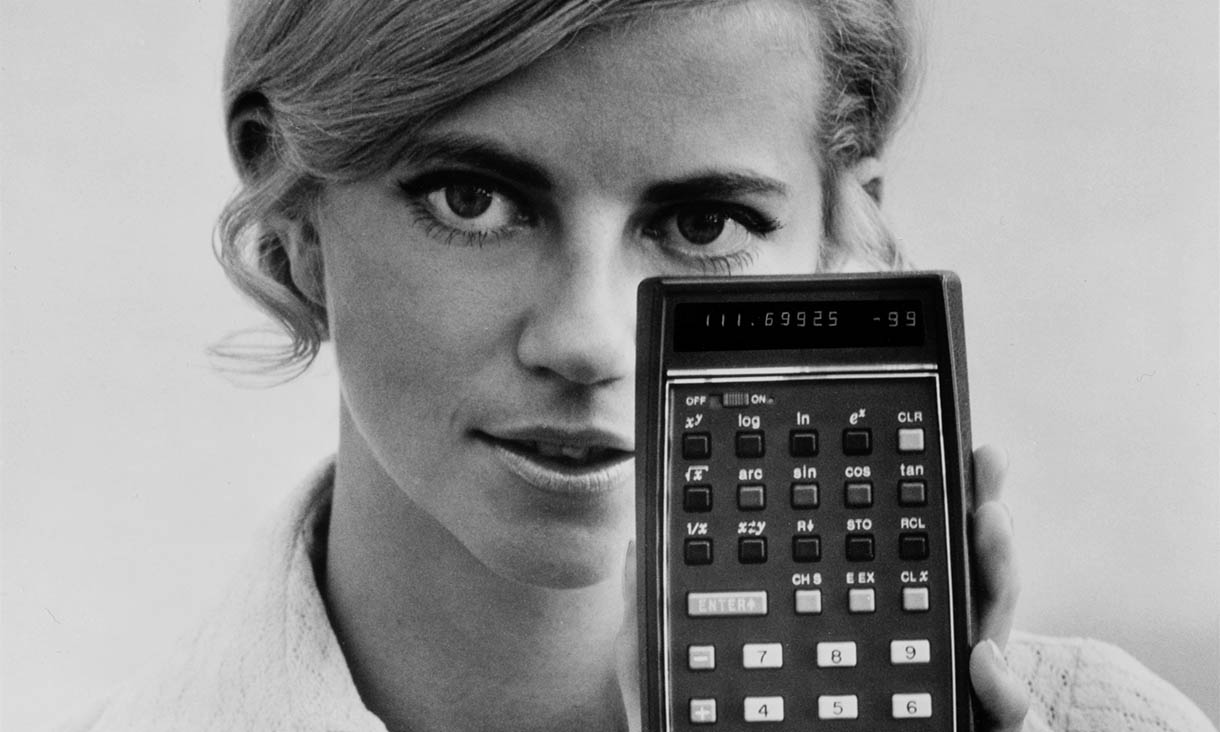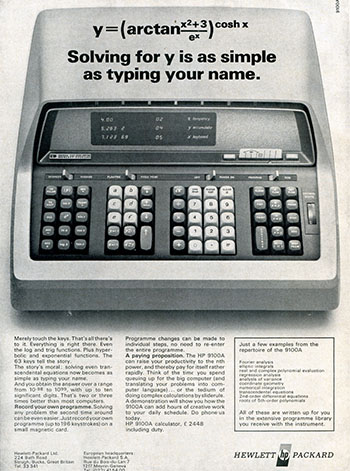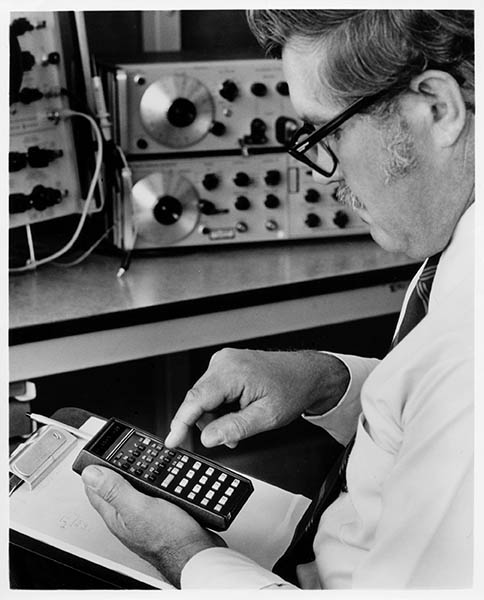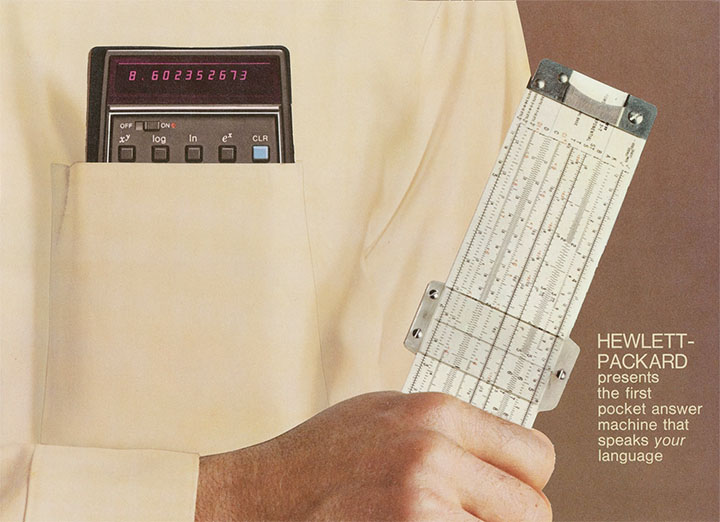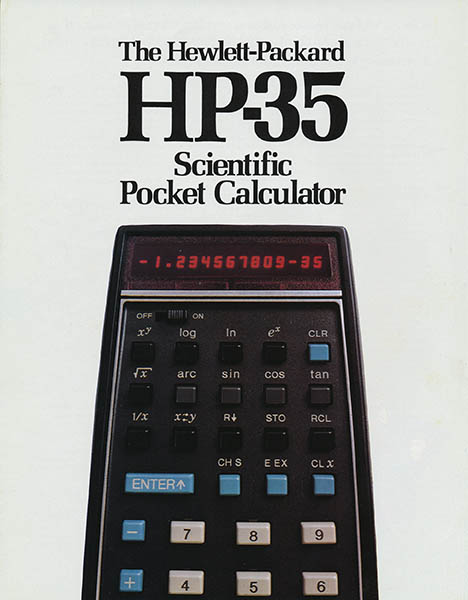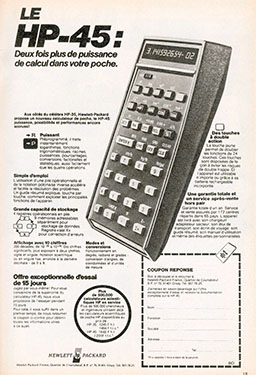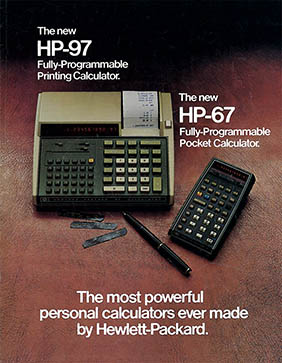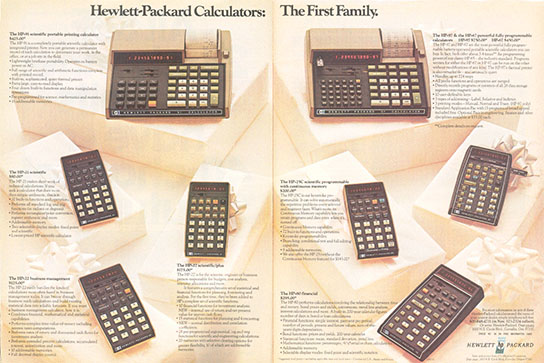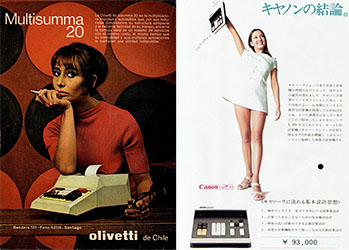126
The HP-35
The Design of Consumer Electronics
By now you know this story: In the middle of the depression the Stanford grads William Hewlett and David Packard started a partnership in a rented Palo Alto garage – ground zero of Silicon Valley – and in 1939 produced their first commercial product, the 200A audio oscillator.
That was followed over the years by nearly every imaginable piece of scientific test equipment – things like signal generators, frequency counters and synthesizers, wave analyzers, voltmeters and oscilloscopes. In 1966 Hewlett Packard introduced their first computer and in 1968 the first desktop computer – the 40-lb HP 9100A:
UK HP 9100A ad, May 1969. Cycloblog
In perhaps the most famous design brief in electronics history Bill Hewlett challenged his engineers to shrink the 9100A into something he could fit in his pocket. Eventually Dave Cochran, the original HP-35 product manager, determined that it would be feasible using newly-developed integrated circuits and LEDs. A market research study, however, warned that the device would be too expensive and there was simply no market. That didn’t matter to Hewlett. He decided he wanted one and said “We’re going to go ahead anyway.”
Another press kit photo, 1972
In a radical reversal of their normal design process HP began with the physical packaging – an angled and tapered wedge – and engineered the electronic and mechanical components to fit inside. As designer Edward Liljenwall stated: “size was the overriding constraint on the design.” Indeed, Liljenwall left no part of the design to chance: the texture of the plastic case, the angle of the LED display, the size, color and placement of the keys, even the rubber feet that served as battery door latches were all carefully considered:3
In less than two years at a development cost of one million USD Cochran and his team of 20 engineers had created the first scientific calculator. Bill Hewlett announced the HP-35 on 4 Jan 1972 but the question remained – would anyone buy a 395 USD slide rule replacement? To help answer that question HP’s marketing department began an unprecedented advertising campaign, including everything from magazine ads to direct-mail circulars.
Direct-mail brochure, 1972
Direct-mail order form, 1972
Marketing brochure, 1973
As it turned out, the marketing department needn’t have bothered. People stood in line to buy it. Students sold their cars to afford it. General Electric alone ordered 20,000 units. Demand was so great there were soon waiting lists. Between 1972–75 more than 300,000 were sold, an order of magnitude greater than their wildest estimates. It was HPs most successful product to date and the first in a long line of scientific and business calculators: 4
French ad, 1974
US ad, 1975
US brochure, 1976
US ad, Christmas 1976
It would be difficult to overestimate how disruptive a technology the HP-35 was. Literally overnight the slide-rule became obsolete. As Lewis Terman stated when he named it an IEEE Milestone in 1997: “[it] accelerated the pace of technological change and revolutionized the engineering profession.” More than that, however, the combination of industrial design, state-of-the-art technologies, software algorithms and applications served as the model for nearly every handheld electronic device since; everything from your Mattel Electronic Football (1977) to your iPhone (2007).
1. Unless otherwise noted, the images are from the HP archive: either the 2009 Press Kit or the IEEE Milestone site. For more information about the HP-35 see the HP Timeline.
2. In this quarter-final elimination round of Hot Babes Selling Electronic Calculators the 1972 all-American HP girl handily beats the 1970 Chilean Olivetti Multisumma girl (although the cigarette is a nice touch) but is ultimately edged out by the 1970 Japanese Canon Canola girl:
3. For more see: Liljenwall, Edward. “Packaging the Pocket Calculator.” Hewlett-Packard Journal. Jun 1972: 12–13. Which is available online.
4. For everything you could possibly want to know about HP calculators see Dave Hicks venerable HP Museum. HP still sells calculators but, without exception, you do not want those. You want an older one. Of course so does everyone else so be prepared to pay.
25 Jul 2012 ‧ Design
